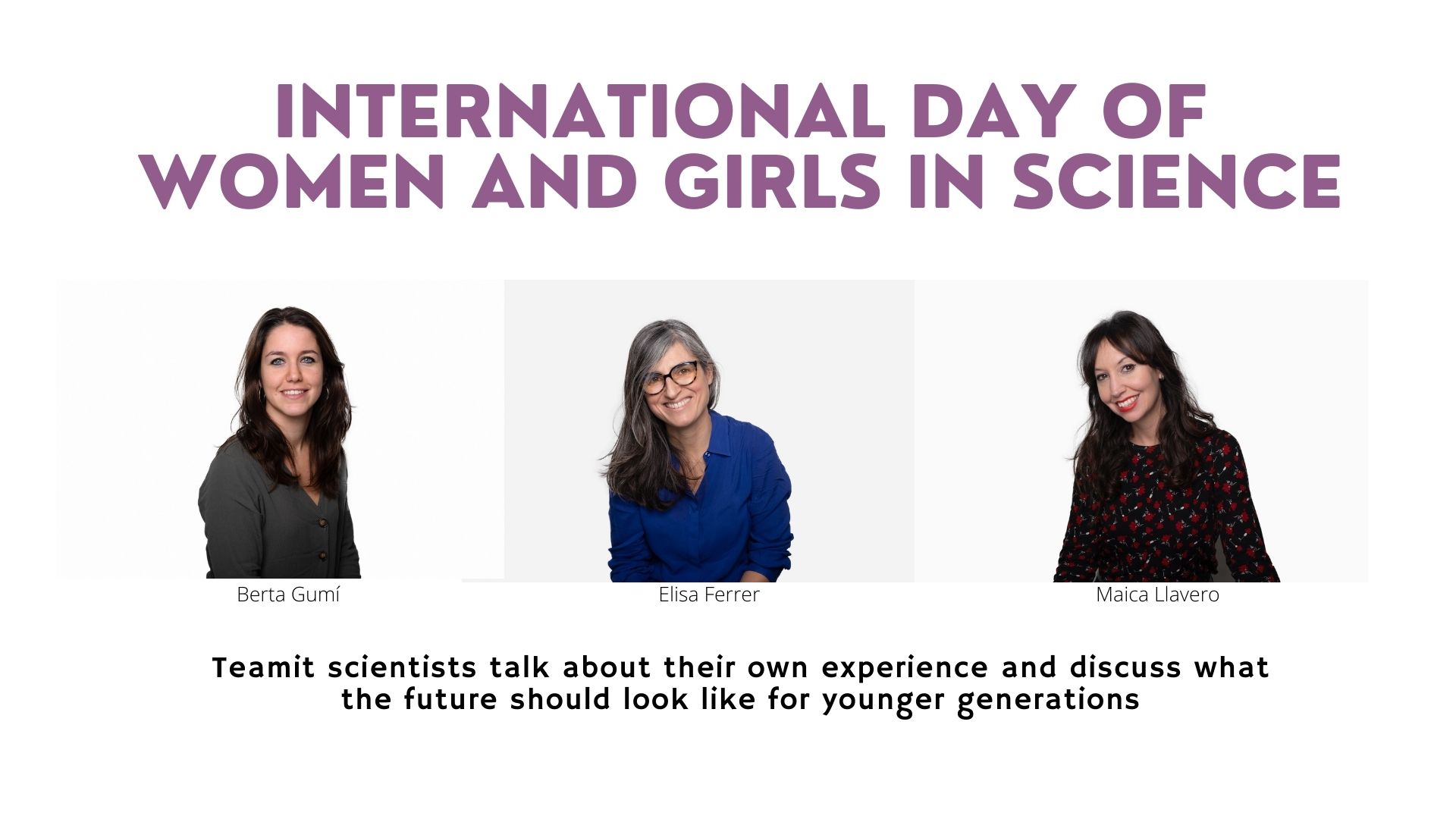by Gisela Pairó, Head of Communication at Teamit
Elisa Ferrer, 47, graduated in Pharmacy and completed a PhD in Physiology at Universitat de Barcelona (UB). She conducted postdoctoral research in Neurophysiology at the University of Texas – Health Science Center in Houston (USA). Maica Llavero, 33, took a degree in Pharmacy and a Master’s degree in Biomedicine in UB. She then completed her PhD in Molecular Neuroscience at The University of Edinburgh. Berta Gumí, 30, studied Physics and completed an MSc in Nanoscience and Nanotechnology and a PhD in Biotechnology, before conducting postdoctoral research at the Institute for Complex Molecular Systems (ICMS) at Eindhoven University of Technology (Netherlands). Elisa. Maica and Berta joined Teamit to drive forward investigation and innovation in multi-stakeholder, collaborative, international partnerships across Europe.
They reveal in this article what draw them to science in the first place and what has been their experience as female researchers so far. They also share their views on what could be done to increase the presence of women in science and have a message for girls: they are the force of change!
Science came as a natural choice for Maica. “I attended a very forward-thinking school that encouraged us to be creative and learn through experience. I already loved carrying out experiments back then” she explains. Her fascination with the human body marked Elisa’s career preferences. “I opted for Pharmacy as a multidisciplinary degree that gives access to a wide range of career opportunities from biomedical research to public health” she points. In Berta’s case, her mathematics teacher in high school influenced her decision to study Physics. “He was a meteorologist and one day took us to a tv station. I instantly clicked and made it my career choice. Besides sciences, I love communication”. They sailed through university, but reality struck after.
“As a post doc I could observe that female post-doc researchers that wanted to have children had a tremendous amount of pressure to keep delivering results “as if nothing happened”. They were also forced to come back to work earlier than expected if they wanted to keep publishing and having the same opportunities for career development as their male peers. This further translates into lower numbers of female professors. I was a post-doc a while ago and society has evolved, but pressure is still higher for female than for male researchers” Elisa explains. An opinion shared by Maica and Berta. “Finding a balance between your personal life and your career as a researcher is very complicated. Moreover, when maternity kicks and you also have the pressure to have a regular income. Uncertainty always punishes women more than men” reflects Maica. “During the pandemic we have seen that scientific-publishing outputs were lower for female researchers, particularly at early career stages, as they had to take up more household work and childcare than their male counterparts” adds Elisa. Berta refers to the pyramid of research with plenty of women at the bottom and very few at the top. “Gradually, authorities in more countries are taking measures to encourage women to stay in research” she explains.
 Their message to young girls is unanimous: if you enjoy science go for it, regardless of other people’s views and opinions or career prospects. “Young girls are the force of change” says Maica. “They need to trust their skills and instincts, look for female role models and find allies along the way” recommends Elisa.
Their message to young girls is unanimous: if you enjoy science go for it, regardless of other people’s views and opinions or career prospects. “Young girls are the force of change” says Maica. “They need to trust their skills and instincts, look for female role models and find allies along the way” recommends Elisa.
And how can society pave the way for the female scientists of the future? “Besides informing them of the wide range of career opportunities in science in addition to academia, more resources need to go into innovation and research. Amongst other things, to generate better and more sustainable opportunities for women to enter and stay in sciences” remarks Maica.
“Young girls need more role models. And boys do also! The history of scientific discovery has been written by men and the achievements of women scientists have been erased from books, giving the false notion that science and technology are reserved to men. There should be more visibility of female researchers and scientific leaders and their experiences and success stories must reach young girls, as they can influence their preferences towards STEM (Science, Technology, Engineering, Math) careers” highlights Elisa. In addition to role models, her recipe to increase women presence in STEM sectors is straightforward: more strong networks for women in research, solid policies to fight gender inequality and committed institutions to implement them.




